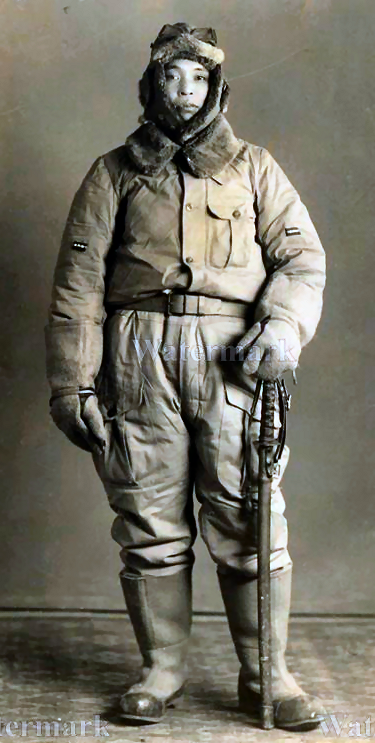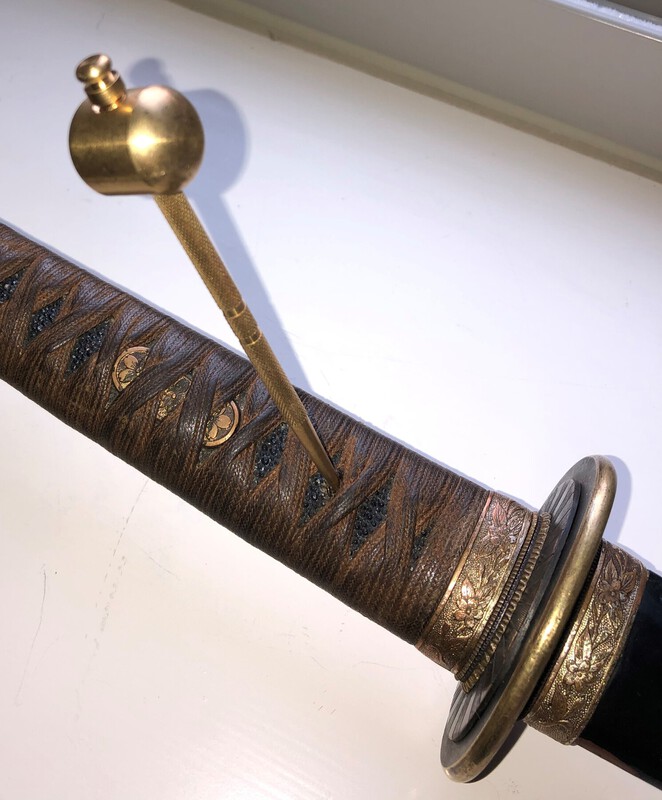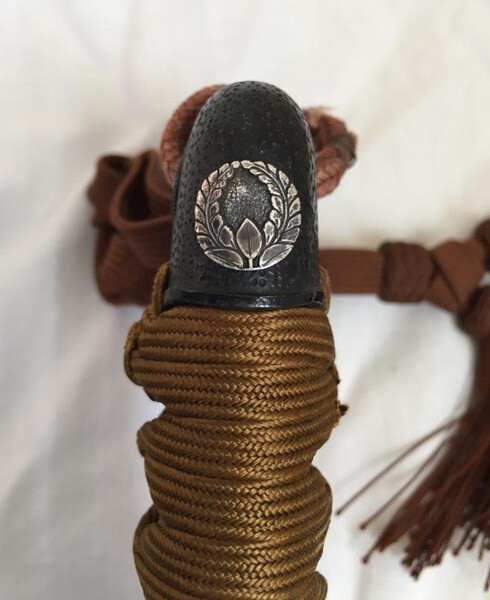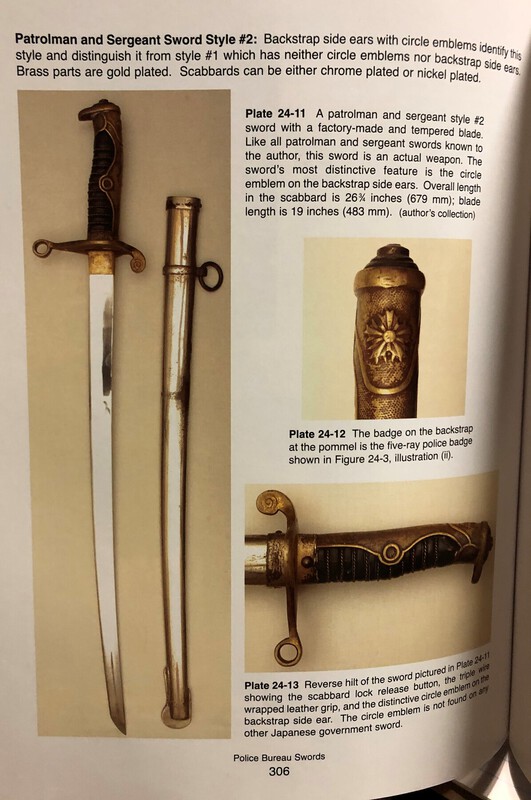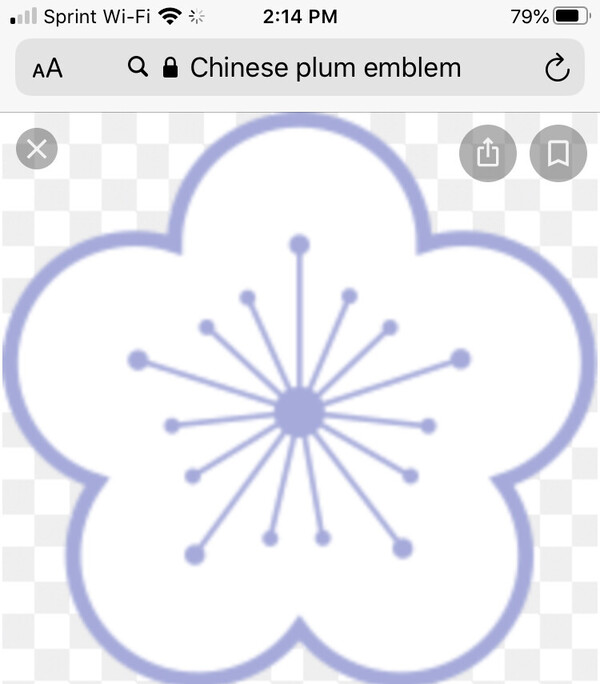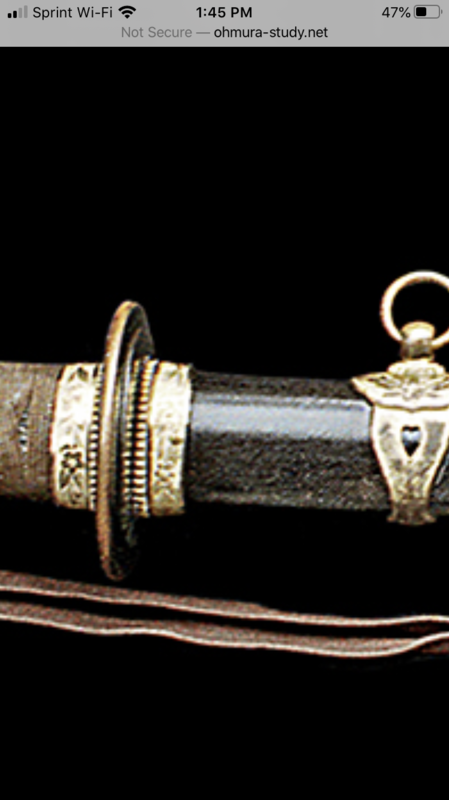-
Posts
13,067 -
Joined
-
Last visited
-
Days Won
157
Content Type
Profiles
Forums
Events
Store
Downloads
Gallery
Everything posted by Bruce Pennington
-
Shoot, I remember that conversation now! Thanks Dave! He was addressing my concern, earlier in the conversation, that Gunzuko NCOs carrying an officer sword would be an insult to IJA officers. So, having forgotten that, I have been telling guys that the all-brown tassel was likely carried by Gunzuko, in general, but it was more specific - the NCO Gunzuko were to use the all-brown tassel. Officer Gunzuko were permitted to use the colored ones equivalent to their ranks.
-
Interesting Takahisa. Only the 2nd I've gotten pics of since I've started filing them, and both are Autumn '43, though different painted numbers, so clearly different blades. The current leanings on the "W" is that it is an inverted "M", or double chevron, indicating a half-way inspection. May not have any meaning as to whether it was gendaito or showato, don't know. Takahisa was one of a known 8 smiths (plus Mantetsu, so 9) known to come with the occasional W.
-

NCOs with Private Swords
Bruce Pennington replied to Bruce Pennington's topic in Military Swords of Japan
Here's one Chris (Vajo) found. I could be wrong, but it looks to me that he's a Sgt Major carrying a civil sword - cloth ito and thin civil tsuba. -
The guy on the right is a platoon Sgt Major and it looks like (though difficult to see) he's got a family sword re-fitted for the war. The tsuka looks like real ito and the tsuba is quite thin.
-
This is a classic gunto that highlights how much we really don't know. According to Nick's document, this gunto was likely carried by a Gunzuko officer equivalent. But the tag says SSgt! I could imagine a G.I. grabbing a sword without a tassel, and finding one (even though it's the wrong rank) adding it to the sword. But the idea that he would have found a cloth tag and added it to a sword seems extremely unlikely to me. Even the Gunzuko, though, were supposed to carry a sword commensurate with their equivalent rank. So if the guy were an NCO equivalent he should have been carrying a Type 95. I've started adding these oddballs to my files. The norm is the officer sword with an NCO leather tassel. But this one is even stranger. I feel like Stephen, that guys may have been NCOs given promotion orders, but had not gone through the process of upgrading all his equipment. But that's just supposition for now..
-
I really like that style of the rising sun dai-seppa! If you haven't found the site already, you'll really learn a lot about these at Ohmura's site. Here is the link to the beginning of his Kai-gunto pages: Naval Officers Type Tachi. Once there, you can read through the pages on the Kai-gunto. Once done, click on the Table of Contents page and you'll see links to all the gunto. It's quite a treasure trove of pictures and information.
-
Don, It's normally pretty easy as there is usually only 1 bamboo peg to remove. Once out, the handle (tsuka) and handguard (tsuba) and spacers (seppa) simply slide right off. I"m posting a pic of how to push that peg out. But yours appears to have 2 pegs (ok, not complicated) but that strange metal collar at the base of the tsuka is a big unknown. You'll have to see when you get it, if there is a pin through it too. If not, the tsuka might come right off after removing the apparent pegs. After another look, I'm agreeing with Steve, for now, that this may be an island-made sword. Official Japanese gunto only have one mekugi (peg) (NCO and Rinji gunto have 2).
-
Hard to tell much with these pics. Looks like it might have a worn NCO leather tassel (end cap stitching gone and knot unraveled). Could be an old sword re-ritted for the war. Interesting engraving on the metal parts. Hope it turns out legit.
-

Osaka-Kyoto area Rinji Seishiki mounts
Bruce Pennington replied to george trotter's topic in Military Swords of Japan
George, I'm not understanding what it is about the fittings that your feel are unique to the area. Is it the leather covered saya? or something about the tsuka? -
Here's an example of an up-right (vs hanging down) wisteria. I thought Malcolm had mentioned the practice, but couldn't find his discussion on this thread. It was mentioned (somewhere) that some felt the up-right look projected power and strength. Don't know if this one is tied to a particular family name. Comes from Tom, Post #20 on this thread. On a Rinji-seishiki!
-

Survey on distribution of Mon
Bruce Pennington replied to PNSSHOGUN's topic in Military Swords of Japan
Neil, For George's survey - is the blade showato or gendaito? Also, I don't recall ever seeing a mon on a Rinji-seishiki model before. Seems like this was asked about in an older thread, but I don't recall if there have been examples. -

Police Short Sword Authentication
Bruce Pennington replied to Skrag0's topic in Military Swords of Japan
Page 306 - Patrolman and Sergeant Sword Style #2 He says the blade is factory made, but tempered, and an actual weapon. Yours is identical to the one in Dawson's book! Cool find! -
I appreciate the update, and apologize for my hot-headed post, sorry! The other guy says he bought it from a "Michelle", and said he's returning it too. I'm not against, folks selling and buying replicas or items of iffy heritage, but they should be honest about it when the authenticity is shown to be questionable. Again - my apologies!
-

Bamboo Leaf pattern Tsuba on Gunto with old blade
Bruce Pennington replied to Baka Gaijin's topic in Military Swords of Japan
-

Bamboo Leaf pattern Tsuba on Gunto with old blade
Bruce Pennington replied to Baka Gaijin's topic in Military Swords of Japan
Malcolm, The send-off story is quite amazing to hear, thanks for sharing that! We all know that soldiers were sent off with various things like flags, and belts. That's the first time I've heard of a village having a sword prepared. -

Kai-Gunto bring back Dress Sword and Dirk group
Bruce Pennington replied to Tonkotsu's topic in Military Swords of Japan
Dick, Thanks for the extra pictures of the kaigunto. The anchor stamp on the seppa is of the Toyokawa Naval Arsenal and the Seki stamp on the nakago, like Dave said, indicates the blade was not made using traditionally. By the signature stating "special steel made by..." already indicates the smith seems to have engineered his own steel, rather than use the traditional tamahagane steel. That alone, even if the smith hammered and folded the steel, like the smiths of old, would have caused the non-traditional rating. So quite a nice kaigunto you have there! -
Here's one for ya John! Long, and apparently skinny. Since he's mounting a half-track, we could start a rumor about "Half-track swords" being really long!
-

Model 1883 Imperial Japanese Navy Dress Sword
Bruce Pennington replied to Tonkotsu's topic in Military Swords of Japan
Dick, that's quite a fabulous collection! Do you know how he came to get it from the family? How about more close-ups of the kai-gunto? One of the hamon (temper line), blade tip, full shots of both sides of the nakago? The cord isn't a tassel, but is the cord that linked the sword and saya (scabbard), keeping the sword from slipping out (there's a word for it, which I can never remember). -
OUCH! That definitely needs to go Bye-Bye! Chris, you've got a really nice, quality Type 97 Japanese Officer Gunto. Do yourself a favor and lose that bolt, and while it's out, slide the handle and seppa, and tsuba (handguard and spacers) off so we can all see who made the blade. It might even have a date. Don't be afraid of damaging anything. These were made to come off easily. If it resists, it's simply 80 years worth of dust and crud. Grab both sides of the tsuba and rock it side to side and lever the stuff into motion. If it's still resisting, wrap the blade tightly with a rag, so you can hold it, and tap the tsuba with a rubber mallet or a block of wood. It will come off. Let us see good pics of both sides of the nakago (tang) when you're done.
-
Ohmura has one with the fat seppa. The only thing wrong with the seppa is the forward one is out of order.
-
Can't tell from the picture - is that late-war navy, missing the leather cover from the saya; canvas ito? or simply standard navy but missing the semegane and sayajiri?
-
Chris, My only experience is in holding my Takayama-to. Although shorter than my standard gunto, it is heavier, and the fatter tip adds noticeable weight to the end. So, it's end-heavy and not comfortably balanced in-hand, like most gunto. The added weight at the end is designed to carry more momentum in the swing, bringing more impact force in the blow. Takayama's idea was to "kill with one strike." But the imbalance would quickly tire one's hand/wrist/forearm in a fight of longer length.
-
I wonder if the military polished these when they re-fitted them for the war. It's hard to believe a 640 year old blade would still look that good! It would make a nice compliment to my Muromachi period blade in kai-gunto mounts. Christmas is coming, who knows what could happen! Good luck Neil, this beauty deserves a good home.
-
Ok, got word back from Warrelics - Naruse Kanji, the guy on the right was a Sounin-kan, 4th or 5th class, which is the Gunzuko equivalent to Maj or Lt Col. So the coloration of the tassel is likely due to sun reflection off of curves/wrinkles or some such thing. Guy added another story of them surviving hand-to-hand combat from a massive attack on their position. Post #7 on Page 2.
-
So, I'm gathering that we don't have a word for the widening of the blade shape at that point.


